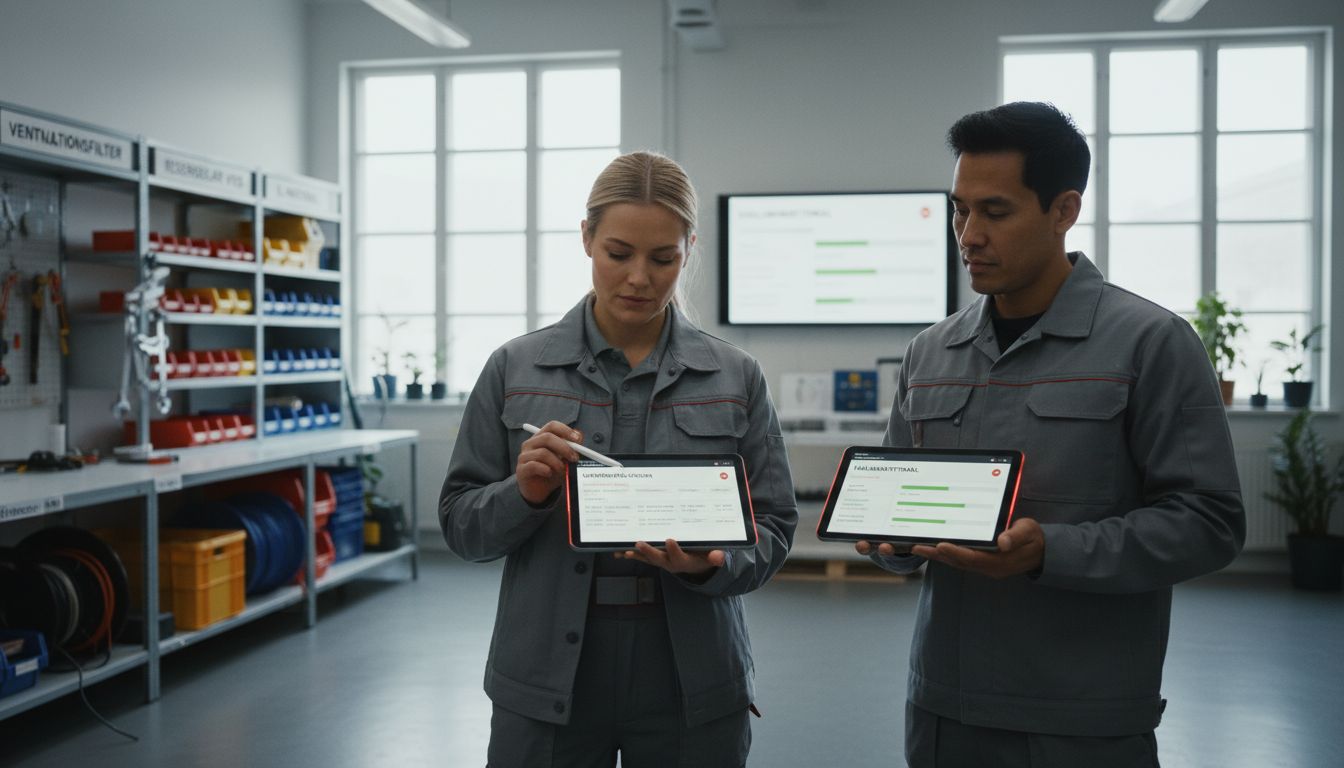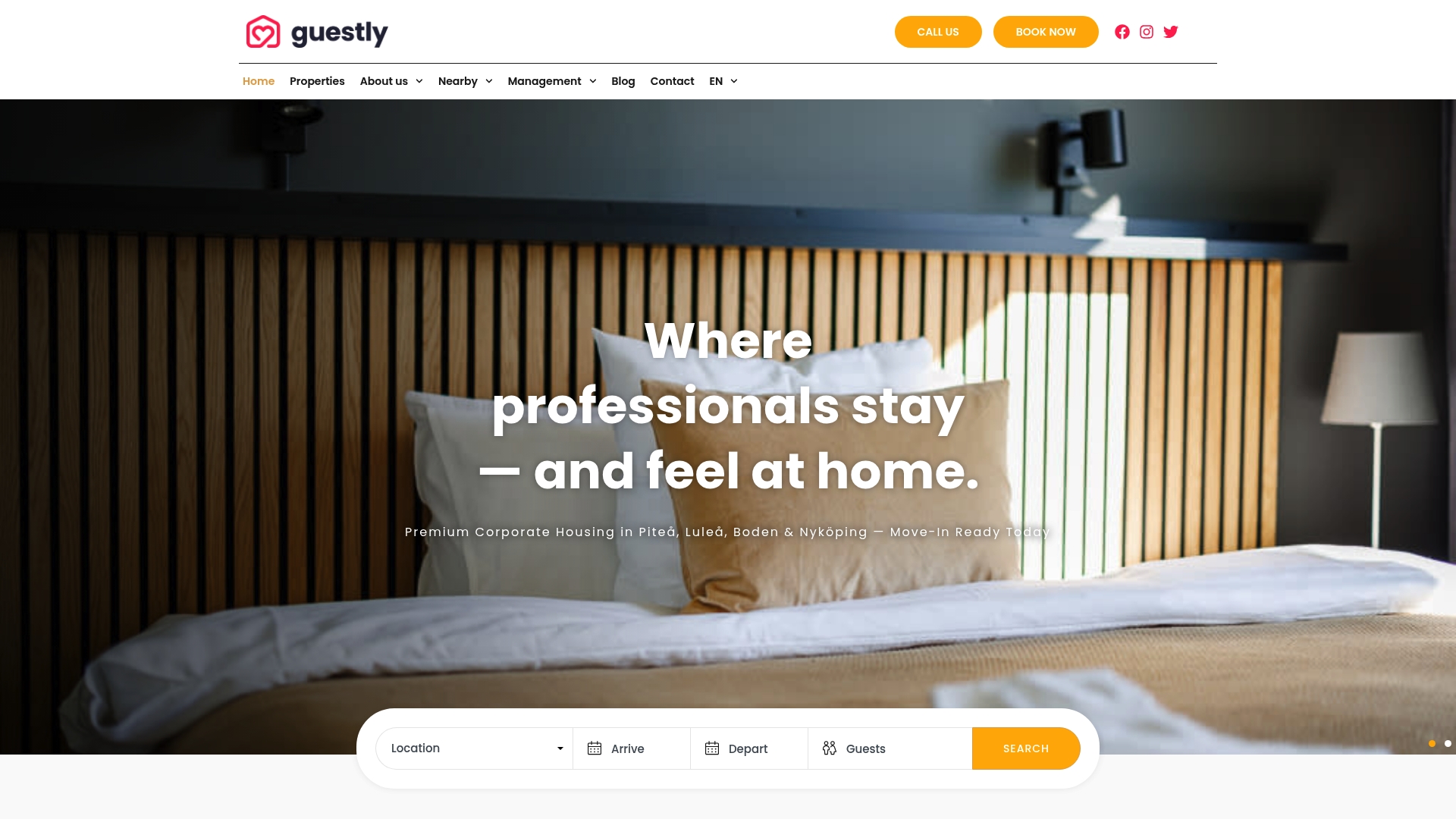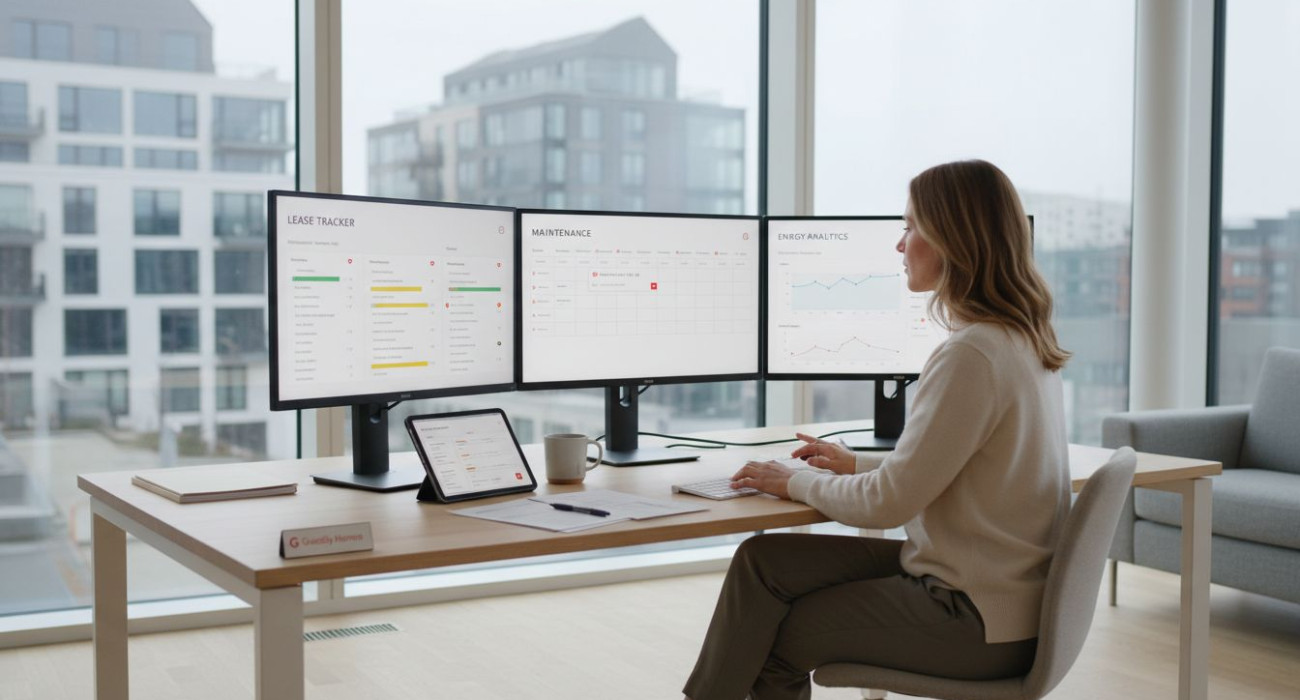Over half of real estate professionals now rely on digital tools to manage properties, marking a sharp shift from manual record-keeping. This trend matters because smarter property management software can save time, cut costs, and simplify daily operations for owners and managers. Whether you oversee a single building or a growing portfolio, understanding these modern solutions means gaining an edge in a competitive industry.
Table of Contents
- Defining Property Management Software Today
- Types of Property Management Software Solutions
- Essential Features For Nordic Property Operators
- Comparing Popular Software For Swedish Owners
- Risks, Costs, And Integration Challenges
Key Takeaways
| Point | Details |
|---|---|
| Comprehensive Functionality | Property management software integrates tools for lease tracking, maintenance management, financial reporting, and tenant communication, streamlining operations for property managers. |
| Market Trends | The property management software market is shifting significantly toward cloud-based solutions, capturing 64% of the market share and indicating a preference for flexibility and accessibility. |
| Regional Customization | Nordic property management software must include tailored features like energy management and climate-adaptive maintenance to address unique regional demands. |
| Implementation Risks | Property managers face financial, technological, and regulatory risks when adopting new software, necessitating careful planning and risk assessment for successful integration. |
Defining Property Management Software Today
Property management software represents a technological evolution in real estate administration, transforming how property owners, managers, and stakeholders interact with their assets. According to Moridor Intelligence, these digital solutions are designed to streamline the complex landscape of real estate management through comprehensive digital platforms.
At its core, property management software encompasses a robust suite of digital tools engineered to simplify and automate critical operational tasks. These platforms provide integrated capabilities that address multiple dimensions of property management, including:
- Lease tracking and documentation
- Maintenance scheduling and work order management
- Financial reporting and accounting
- Tenant communication systems
- Occupancy and rental performance analytics
Grand View Research highlights the significant market growth, with the European property management software sector generating USD 1,301.0 million in revenue during 2024. This substantial financial indicator underscores the increasing recognition of digital transformation within real estate management.
Modern property management software goes beyond simple record-keeping. These sophisticated platforms function as intelligent ecosystems that integrate multiple operational aspects, enabling property professionals to make data-driven decisions with unprecedented efficiency. By centralising information, automating routine tasks, and providing real-time insights, these software solutions represent a strategic investment for property owners seeking to optimise their operational performance and enhance tenant satisfaction.
Types of Property Management Software Solutions
Property management software has evolved to offer diverse solutions catering to different operational needs and property types. Industry Research highlights two primary deployment models that have emerged in the market: on-premise solutions and cloud-based systems. In 2024, these models demonstrated distinct characteristics and market adoption rates, with cloud-based platforms capturing 64% of the market share, signaling a significant shift towards more flexible digital infrastructure.
The software landscape can be categorised into several key types based on property specialisation:
Here’s a comparison of key features found in different types of property management software:
| Software Type | Specialised Features | Typical Use Cases |
|---|---|---|
| Residential Property Management | Lease tracking Tenant communication |
Flats Apartment blocks |
| Commercial Real Estate Management | Billing integration Occupancy analytics |
Offices Retail spaces |
| Mixed-Use Property Platforms | Multiple asset support Unified dashboard |
Residential & commercial properties |
| Short-Term Rental Management | Channel integration Automated bookings |
Holiday lets Serviced apartments |
| Portfolio Management Software | Financial reporting Performance analysis |
Multiple property portfolios |
- Residential Property Management Software
- Commercial Real Estate Management Systems
- Mixed-Use Property Platforms
- Short-Term Rental Management Solutions
- Portfolio Management Software
According to Mordor Intelligence, these solutions provide comprehensive features tailored to specific property management requirements. Each platform offers unique capabilities designed to streamline operations, including:
- Automated lease tracking
- Tenant communication interfaces
- Financial reporting and accounting tools
- Maintenance request management
- Occupancy and performance analytics
The distinction between on-premise and cloud-based solutions remains crucial for property managers. On-premise systems, favored by large enterprises seeking complete data control, represented 36% of the market. Cloud-based platforms, offering scalability and remote accessibility, have become increasingly popular among modern property management professionals seeking flexibility and integrated technological solutions.
![]()
For property owners and managers navigating this complex digital landscape, understanding these software types is essential. Understanding What is Property Management Software can provide deeper insights into selecting the most appropriate solution for specific operational needs and property portfolios.
Essential Features for Nordic Property Operators
Property management software for Nordic markets demands specialized features that address the unique operational landscape of the region. Aareon highlights the critical importance of comprehensive SaaS solutions tailored specifically to European real estate management requirements, with particular emphasis on robust maintenance and operational tracking capabilities.
Key essential features for Nordic property operators include:
-
Advanced Energy Management
- Carbon footprint tracking
- Sustainability performance monitoring
- Energy efficiency reporting
-
Multilingual Support
- Swedish language interfaces
- Scandinavian regulatory compliance tools
- International billing and documentation
-
Climate-Adaptive Maintenance Scheduling
- Seasonal maintenance planning
- Winter preparedness modules
- Remote property monitoring systems
The Nordic property management landscape requires software solutions that go beyond traditional operational tracking. These platforms must integrate sophisticated technological capabilities with region-specific nuances, addressing challenges unique to Scandinavian real estate markets.
 Intelligent systems now incorporate predictive maintenance algorithms, advanced energy monitoring, and seamless regulatory compliance tools.
Intelligent systems now incorporate predictive maintenance algorithms, advanced energy monitoring, and seamless regulatory compliance tools.
For property operators seeking comprehensive management strategies, 8 Essential Tips for Effective Property Management provides additional insights into optimizing operational performance in complex Nordic property ecosystems.
Comparing Popular Software for Swedish Owners
Property management software selection for Swedish property owners requires careful consideration of regional technological ecosystems and specific operational requirements. Aareon, a prominent SaaS solutions provider for the European real estate industry, represents one of the significant players in the Swedish property management software landscape.
When comparing software solutions, Swedish owners should evaluate platforms across several critical dimensions:
Performance Comparison Criteria:
-
Cost Efficiency
- Initial investment
- Ongoing subscription fees
- Return on technology investment
-
Functional Capabilities
- Swedish language support
- Local regulatory compliance
- Integration with Nordic banking systems
-
Technical Infrastructure
- Cloud-based flexibility
- Data security standards
- Scalability for portfolio expansion
The Swedish property management software market demonstrates a nuanced ecosystem where technological sophistication meets precise operational requirements. Modern platforms must balance advanced features with intuitive user experiences, addressing the unique demands of Nordic real estate management.
For property owners seeking comprehensive insights into optimizing their technological strategies, Best Serviced Apartments Sweden offers additional perspectives on navigating the complex landscape of property management solutions.
Risks, Costs, and Integration Challenges
Property management software implementation presents a complex landscape of technological and operational challenges that demand strategic navigation. ArXiv Research highlights critical considerations surrounding incident management, data security, and system reliability as fundamental elements property managers must address when integrating new technological platforms.
Key risk categories for property management software adoption include:
Financial Risks
- Initial software investment
- Customization and implementation costs
- Potential productivity disruption during transition
Technological Challenges
- System compatibility with existing infrastructure
- Data migration complexities
- Cybersecurity vulnerabilities
- Integration with legacy management systems
Regulatory Compliance Considerations
- Data protection standards
- Regional legal requirements
- Privacy regulation adherence
According to ArXiv Research, emerging technologies like blockchain introduce additional complexity when managing rental documentation. Property managers must develop sophisticated frameworks that balance technological innovation with stringent compliance requirements, particularly concerning regulations like GDPR.
Ultimately, successful software integration demands a holistic approach that considers technological, financial, and regulatory dimensions. Property owners must conduct comprehensive risk assessments and develop flexible implementation strategies that minimize operational disruption while maximizing technological potential.
Unlock Effortless Property Performance with Guestly Homes
Navigating the complexities of property management software can be overwhelming as the article highlights challenges around integration, tailored features for Nordic markets, and operational efficiency. Many property owners face the need for a strategic, hassle-free partner who understands both technology and the local landscape. The goal is clear: maximise profitability while minimising hands-on involvement — a balance Guestly Homes achieves through expert, fully managed service designed specifically for premium properties across Sweden and the Nordics.

Step into a world where sophisticated property management software meets personalised, high-standard care. With Guestly Homes, you can enjoy long-term profitability and consistent performance without the friction of software complexities. Explore how we deliver reliable, data-driven management that supports your investment goals at Guestly Homes. Discover why so many property owners trust us for seamless operations and why our Revenue Share Model and Arbitrage Model are tailored to fit your unique needs. Take the next step today and transform your property management experience.
Frequently Asked Questions
What is property management software?
Property management software is a technological solution designed to help property owners and managers streamline the management of real estate assets by automating and integrating various operational tasks such as lease tracking, maintenance scheduling, tenant communication, and financial reporting.
What are the key features to look for in property management software?
Essential features to consider include lease tracking, maintenance management, tenant communication systems, financial reporting, and analytics for occupancy and rental performance. Additionally, advanced features may cover energy management and regulatory compliance tools.
What are the differences between on-premise and cloud-based property management software?
On-premise software is installed locally on a company’s servers and offers complete data control, while cloud-based software is hosted online, providing flexibility, remote accessibility, and typically requires less initial investment. Cloud-based systems have gained popularity due to their scalability and ease of integration.
What are the main risks and challenges of implementing property management software?
Key risks include financial costs related to initial investment and setup, technological challenges like data migration and system compatibility, and regulatory compliance concerns such as adhering to data protection laws. It is critical for property managers to conduct thorough risk assessments before implementation.



